Dieffenbachia spotted: characteristics and care
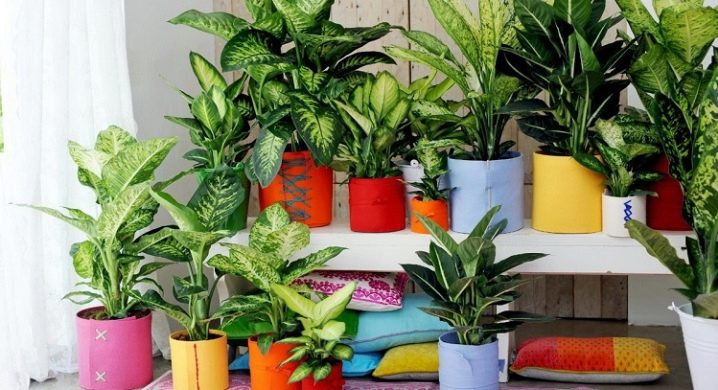
Dieffenbachia spotted is one of those plants that can often be found in apartments, offices, various institutions, and sometimes quite tall specimens are found. The popularity of this plant suggests that its characteristics and easy care for it allow even not very experienced flower growers to keep dieffenbachia and those who are not ready to devote too much time to caring for the plant.
Description and features
Despite the fact that in nature there are many varieties of this plant, at home there are several species, among which the most common is dieffenbachia spotted. Its leaves are elongated, light green with darker blotches of the same color, but a different shade. Therefore, on light leaves, patterns resembling specks and stripes can often be observed. In an adult tree, the leaves are large, the lower ones fade over time and they have to be removed, so part of the trunk remains bare. Usually the plant reaches a height of a meter or a little more.
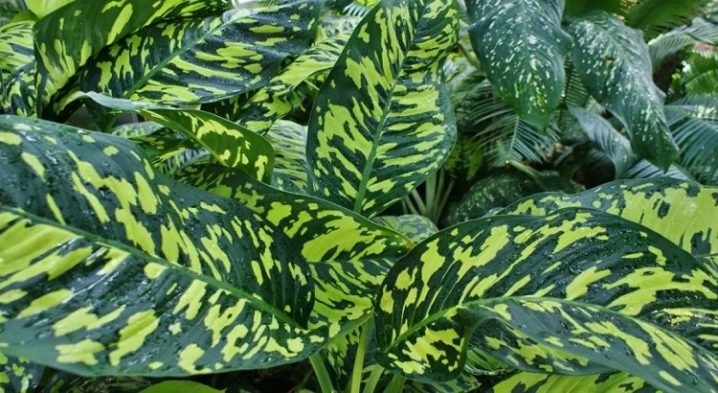
It is difficult to find blooming dieffenbachia at home, but the description of this plant indicates that in nature, it produces small inflorescences, in place of which orange berries then appear.
The characteristics of the plant indicate that dieffenbachia of any variety is poisonous. It can be harmful if the stem juice gets on an open wound or skin of the hands. It is not recommended to grow dieffenbachia if there are animals at home that are not indifferent to the leaves, you definitely cannot eat them.
It is worth taking precautions if there are small children in the house.
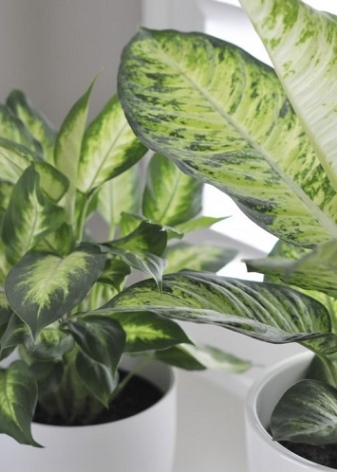

How to plant and care?
Dieffenbachia will delight you with its beautiful foliage for many years if you provide it with proper care at home.
The successful development of a plant begins with its correct planting after it is brought from the store. The soil must be prepared so that all the necessary components are present in it: moss, charcoal, sand, leafy earth.
It is important to strike a balance when choosing lighting. Direct sunlight of Dieffenbachia will not be useful, but the lack of light will deprive its foliage of bright attractiveness. Therefore, you need to choose a place where it will be quite light, but the sun's rays will be diffused.

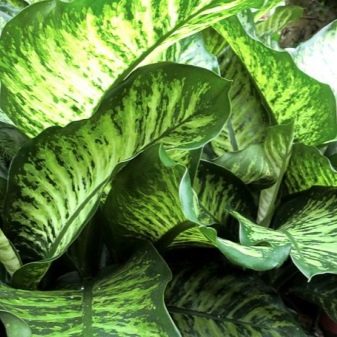
The plant has a positive attitude towards frequent watering, and it is better not to wait until the top layer becomes completely dry, otherwise the leaves may wilt. Tap water is too hard for dieffenbachia, you must first defend it for a day.
The plant loves moisture therefore, spraying can be carried out at least every day, with the exception of winter days, when their number must be reduced, as well as the number of waterings. Over-watering can cause brown spots on the leaves.
Plant food can be bought at a garden store, and those that are intended for indoor plants are suitable. Many packages even have names, among which you can find Dieffenbachia.
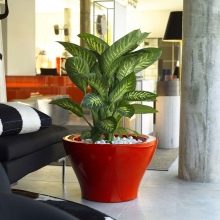
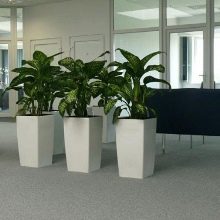

The plant grows in size over time, and the moment comes when it needs to replace the pot. The new container is bought a little more spacious than the previous one. The plant needs to be transplanted in order for it to develop. Only in adulthood, after five years, it is possible not to disturb the plant for at least three years, replanting as needed, when the roots really become cramped in the pot, and they appear in the drainage holes.
When transplanting into a new pot place the drain, pebbles and sand are suitable for this purpose. The plant itself is well watered, then carefully removed from the pot along with the soil on the roots, trying to disturb the roots to a minimum. Then they are placed in a prepared container and supplemented with prepared soil. Once a year, it will be beneficial for the plant to change the top layer of the earth.
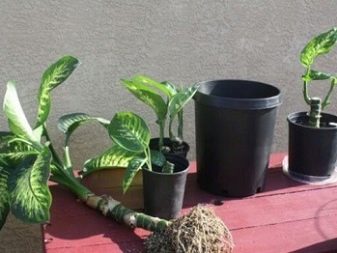
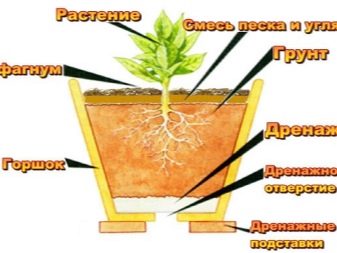
Pests and the fight against them
If the plant is properly cared for, then, most likely, no pests and diseases are afraid of it. But if his immunity is weakened, various troubles may arise. If suspicious spots appear on the leaves: dry or wet, brown or yellow, this means that it is affected by anthracnose, fusarium. In such cases, you should get rid of diseased leaves. Treat dieffenbachia with a fungicide.
To save the plant, it will have to be transplanted into fresh soil, and get rid of the old one, since it is infected. To do this, the plant is taken out of the pot, the infected soil is very carefully removed from the roots. If there are rotten areas, they are cut off. And then the plant is placed neatly in a new pot, sprinkled with earth on top and lightly tamped.
If pests such as scale insects, spider mites, mealybugs have settled in the plant, it is treated with soapy water and insecticides.
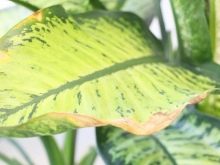
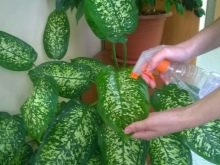

Pruning and reproduction
Dieffenbachia does not need frequent pruning, with the exception of yellowed or dried leaves. But it often happens that the lower leaves die off, leaving a bare trunk, which does not look very beautiful. In this case, flower growers seek to update it. And for this purpose, the tree trunk is cut off as much as necessary. You can cut off almost everything, leaving a stump. And then the plant will receive a second life, giving new shoots. Dieffenbachia spotted grows quickly. And within a few months after trimming, it will look attractive. The trunk is cut with a sharp knife or pruning shears, it must first be wiped with alcohol. The place of the cut is sprinkled with charcoal.
It is very important to take precautions when pruning. Drops of juice can get on your hands or face and cause allergies. That's why all procedures should be carried out with gloves and protect the face. Some people use a protective mask and goggles for these purposes.

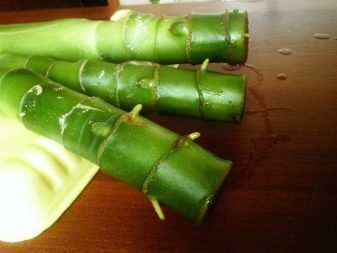
To propagate dieffenbachia, they use the cuttings method. The cut off part of the main stem can be divided into several fragments, but it is imperative that buds are present on each, from which shoots are then formed. The cuttings are placed in settled water at room temperature and observed when the roots appear. After that, they can be planted in the ground, observing all planting rules, including the correct choice of soil.
Usually small dieffenbachia takes root very well and gives new leaves. Cuttings can be rooted without water. To do this, they are placed in prepared soil, covered with a transparent cap on top, not forgetting to periodically air (for an hour or two a day) and water, it is better to do this by spraying so as not to flood the plant. When the first shoots appear, the cover in the form of a cap can be removed and the plant can be taken care of as usual - watering, moistening, feeding.
Top propagation also gives quick results. Usually it is cut if the lower leaves have fallen off or the plant dies. Then the upper part is cut off and placed in a container with water, which it is desirable to change every day. As soon as the roots are formed, dieffenbachia is transplanted into the ground and continue to be looked after as usual.
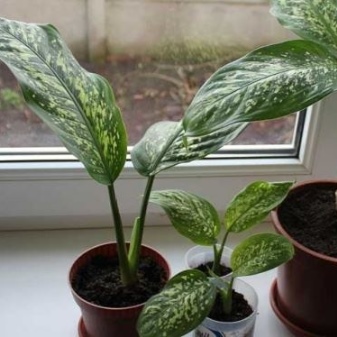

For information on how to care for and propagate Dieffenbachia spotted, see the next video.



























The comment was sent successfully.